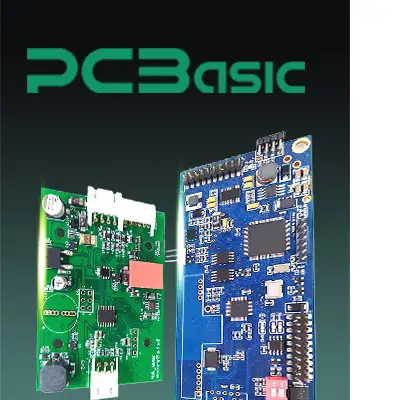

Global high-mix volume high-speed PCBA manufacturer
9:00 -18:00, Mon. - Fri. (GMT+8)
9:00 -12:00, Sat. (GMT+8)
(Except Chinese public holidays)


Global high-mix volume high-speed PCBA manufacturer
9:00 -18:00, Mon. - Fri. (GMT+8)
9:00 -12:00, Sat. (GMT+8)
(Except Chinese public holidays)
HomePage > Blog > Knowledge Base > How Thick Is 1 oz Copper? A Complete PCB Copper Thickness Guide
In the manufacturing of copper PCBs, choosing the appropriate copper weight is one of the key steps in PCB design. Whether it is a small wearable device or a large industrial power module, circuit boards rely on a specific copper thickness to ensure stable electrical performance, good heat dissipation capacity, and sufficient durability. Among all copper thickness specifications, 1 oz copper thickness is the most widely used because it achieves a good balance among conductivity, cost and manufacturability.
This article will introduce in detail the concept of 1 oz copper thickness, including its measurement methods in both imperial and metric units (including the value of 1 oz copper thickness in mm). Meanwhile, we will compare the differences between a 1 oz copper thickness and a 2 oz copper thickness, and provide a copper thickness chart, helping you determine when to use different copper thicknesses in the project. With this information, you can ensure that the designed copper PCB achieves the best balance in terms of performance, safety and cost.
1 oz copper thickness refers to a layer of copper weighing 1 ounce (approximately 28.35 grams) covering per square foot of the circuit board surface.
From the perspective of actual physical thickness, 1 oz copper thickness can be converted to the following values:
• 1 oz copper thickness in mm = 0.0348 mm
• 1 oz copper thickness in mils = 1.37 mils (1 mil = 0.001 inch)
In PCB design, this standard of 1 oz copper thickness is widely applied to circuit boards with low to medium currents. It offers a good balance among cost, electrical conductivity and manufacturing convenience. For most signal layers, common power lines and control circuits, 1 oz copper is already sufficient to meet the requirements of conductivity and heat dissipation, without significantly increasing the manufacturing difficulty and cost of the PCB. For this reason, 1 oz copper thickness has become the preferred specification for the design of the vast majority of commercial and industrial grade copper PCBs.
The selection of 1 oz copper thickness is not only a commonly used standard in the industry, but it will also directly affect the performance and reliability of copper PCB boards. For most low to medium power circuits, a 1 oz copper thickness can provide sufficient current-carrying capacity and have reasonable heat dissipation performance, helping the circuit board and components stay within a safe temperature range.
However, its heat dissipation capacity is slightly weaker than that of 2 oz copper thickness and is more suitable for ordinary power applications.
The standard 1 oz copper PCB board can also meet the mechanical strength requirements for daily assembly and use, and will not make the board too thick or heavy. Meanwhile, 1 oz copper thickness is easier to etch, allowing for finer traces and smaller spacings, making it highly suitable for compact or high-density designs.
With a moderate copper weight, 1 ounce copper achieves a good balance among conductivity, heat dissipation and manufacturing difficulty, and is the preferred specification for most commercial and industrial PCBs.
Due to its advantages such as controllable cost, good electrical conductivity and moderate manufacturing difficulty, 1 oz copper thickness is widely used in various electronic products.
Common applications include consumer electronic devices such as smartphones, laptops and tablets; The Internet of Things and wearable devices. These products usually require high-density routing but have relatively low current. The LED driver circuits require stable current transmission and basic heat dissipation capacity. Non-powertrain circuits in automotive electronic modules, such as in-vehicle infotainment systems and sensor control boards; Medical electronic devices, which require reliable operation but mostly belong to low-power or medium-power circuits; As well as various communication modules, including wireless data transmission and signal processing units.
In these scenarios, a 1 oz copper thickness can provide sufficient electrical conductivity and heat dissipation performance while avoiding increasing the manufacturing cost of the PCB or the complexity of the design. Therefore, it has become the standard choice for the vast majority of commercial and industrial copper PCB boards.
2 oz copper thickness refers to a copper layer weighing 2 ounces per square foot covering the surface of a PCB, with a thickness of approximately 0.0696 mm. Compared with a 1 oz copper thickness, its copper layer is thicker, capable of carrying greater current and providing better heat dissipation performance, making it highly suitable for high-power circuits and high-current applications.
The main feature of the 2 oz copper thickness is that it can support higher current without overheating easily, has a better heat dissipation effect in high-power scenarios, and at the same time improves the mechanical strength and durability of the PCB. However, it also brings some manufacturing and design limitations, such as more difficult etching, smaller space for circuit design, increased overall weight and thickness of the PCB, and a manufacturing cost higher than that of one ounce of copper.
Let’s compare 1 oz copper thickness and 2 oz copper thickness to highlight when one is preferable over the other.
|
Feature |
1 oz Copper Thickness |
2 oz Copper Thickness |
|
Thickness in mm |
0.0348 mm |
0.0696 mm |
|
Current capacity |
Moderate |
High |
|
Cost |
Lower |
Higher |
|
Trace width requirement |
Narrower traces |
Wider traces or same current |
|
Etching complexity |
Easier |
More difficult |
|
Weight |
Lighter |
Heavier |
Therefore, 2 oz copper thickness is typically used in copper PCB boards such as power modules, motor drives, battery management systems, and industrial control equipment, which have high requirements for high power and stable heat dissipation.

Time is money in your projects – and PCBasic gets it. PCBasic is a PCB assembly company that delivers fast, flawless results every time. Our comprehensive PCB assembly services include expert engineering support at every step, ensuring top quality in every board. As a leading PCB assembly manufacturer, we provide a one-stop solution that streamlines your supply chain. Partner with our advanced PCB prototype factory for quick turnarounds and superior results you can trust.
The copper thickness chart is an important tool used to convert the copper weight into the corresponding physical copper thickness. It can help PCB designers clearly understand the impact of copper layer thickness on current carrying capacity, heat dissipation performance and board surface layout. Below is a simplified copper thickness chart for reference:
|
Copper Weight |
Thickness (mm) |
Thickness (mil) |
|
0.5 oz |
0.0174 mm |
0.68 mils |
|
1 oz |
0.0348 mm |
1.37 mils |
|
2 oz |
0.0696 mm |
2.74 mils |
|
3 oz |
0.104 mm |
4.11 mils |
|
4 oz |
0.139 mm |
5.48 mils |
Through the copper thickness chart, PCB engineers can easily complete the conversion of copper weight to thickness during the PCB layout and manufacturing stages, thereby ensuring that the design meets the requirements of current carrying and heat dissipation.
When choosing the appropriate copper thickness for a copper PCB, it is necessary to comprehensively consider circuit performance, durability and cost. The main references are as follows:
Current Carrying Requirement
According to the actual current requirements of the circuit, use the trace width calculator to calculate the required trace width at 1 oz copper thickness or higher. The greater the current, the thicker the copper layer should be to avoid overheating.
Thermal Performance
The thicker the copper layer, the stronger the heat conduction and dissipation capacity, which is suitable for power circuits or PCBs with concentrated heat-generating components, and helps to improve overall stability.
Board Layer Count
Thick copper will occupy more space, which may limit the wiring density of multilayer boards or reduce the number of layers that can be stacked.
Mechanical Strength
In vibration or shock environments, a thicker copper layer can enhance the structural strength and service life of PCBS.
Cost Sensitivity
The thicker the copper, the higher the material usage and manufacturing process requirements, and the overall cost will also increase accordingly.
Under normal circumstances, 1 oz copper thickness can achieve a good balance among performance, reliability and cost. It is only recommended to choose a 2 oz or more copper thickness when a higher current or stronger heat dissipation is required.
Understanding 1 oz copper thickness is very important for every PCB design engineer. It not only represents the actual thickness of a 1 oz copper layer, but also directly affects the current size that the circuit board can safely carry, its heat dissipation capacity and production cost. In most applications, 1 oz copper remains the mainstream choice as it strikes a good balance between performance, manufacturability and cost.
By referring to the copper thickness chart, reasonably comparing 1 oz and 2 oz copper thicknesses, and conducting the correct trace width calculation, it can ensure that the copper PCB meets the design requirements in terms of performance, reliability and heat dissipation.
What is the thickness of 1 oz copper in mm?
The 1 oz copper thickness in mm is 0.0348 mm. It corresponds to one ounce of copper spread over one square foot.
What is the difference between copper weight and copper thickness?
Copper weight refers to how much copper weighs over a square foot (e.g., 1 oz copper), while copper thickness is the physical thickness of that layer. The two are directly related: higher copper weight means greater copper thickness.
How do I calculate PCB trace width for 1 oz copper?
Use a trace width calculator or IPC-2221 standards. Input your required current, temperature rise, and 1 oz copper thickness, and the tool will output the minimum trace width needed.
When should I use 2 oz copper instead of 1 oz?
Choose 2 oz copper thickness when your design requires:
• Higher current carrying capacity
• Better heat dissipation
• Enhanced durability
• More margin in power applications
Otherwise, 1 oz copper thickness is usually sufficient and more economical.

Assembly Enquiry
Instant Quote
Phone contact

+86-755-27218592
In addition, we've prepared a Help Center. We recommend checking it before reaching out, as your question and its answer may already be clearly explained there.
Wechat Support

In addition, we've prepared a Help Center. We recommend checking it before reaching out, as your question and its answer may already be clearly explained there.
WhatsApp Support

In addition, we've prepared a Help Center. We recommend checking it before reaching out, as your question and its answer may already be clearly explained there.
